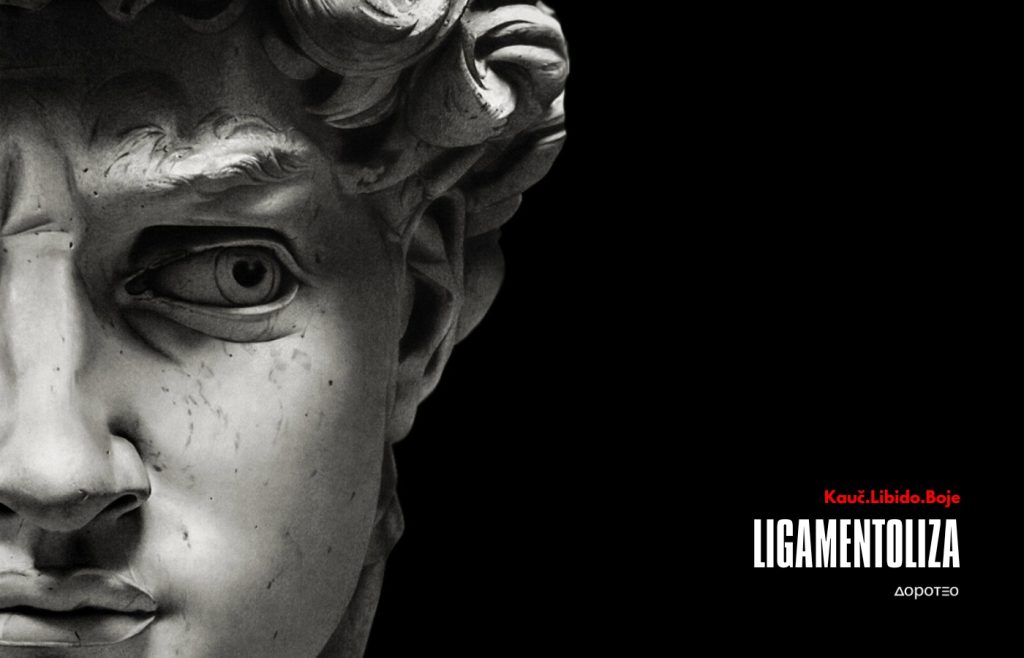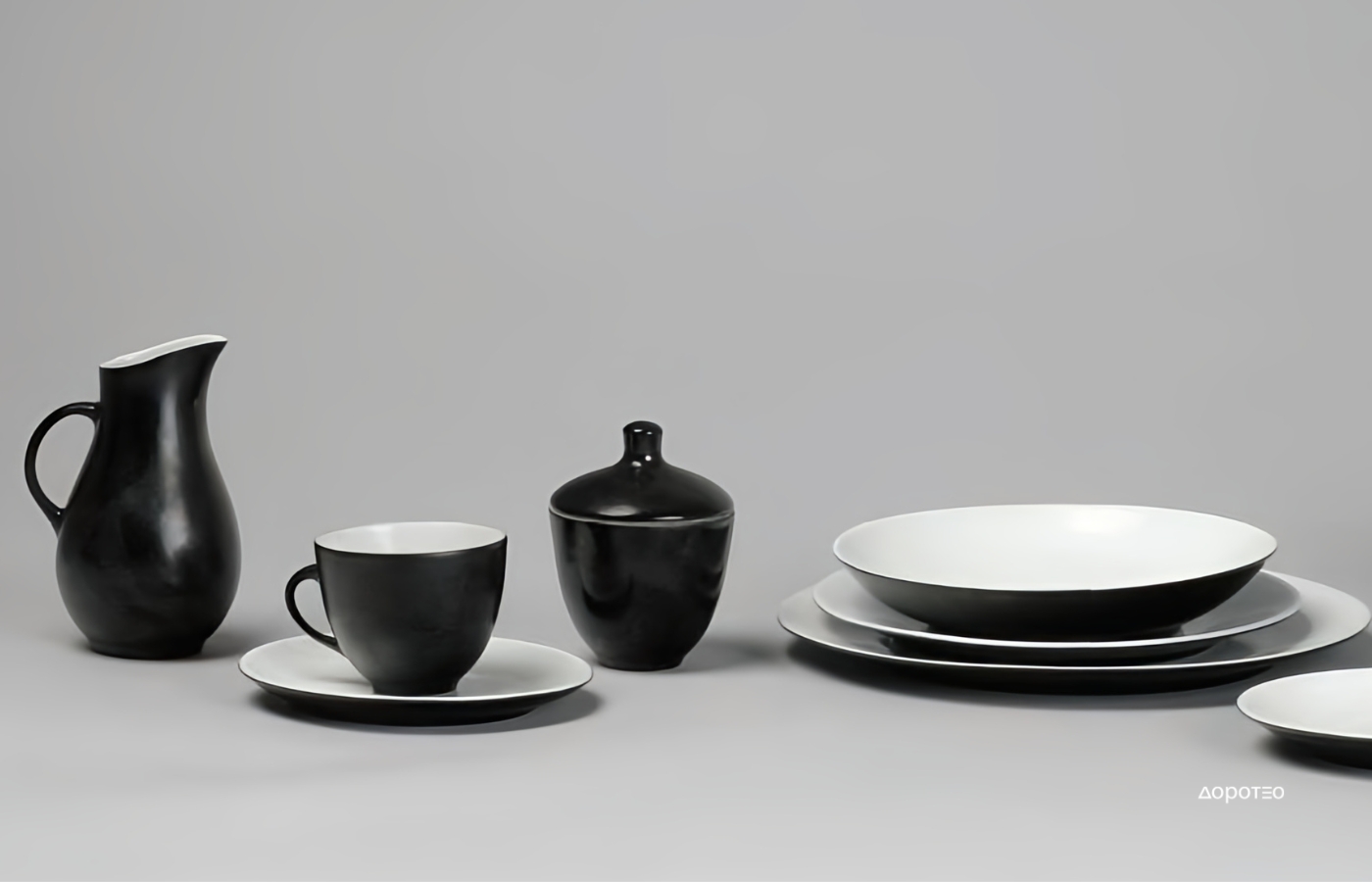
DEVELOPMENT OF INDUSTRIAL DESIGN IN YUGOSLAVIA – JUGOKERAMIKA
The development of Yugoslav ceramics began in the post-war period of reconstruction with the construction of two large porcelain factories – Jugokeramika in Zaprešić and Jugoporcelan in Titov Veles. These two facilities, along with smaller factories, formed the basis for the production of tableware, decorative porcelain, and tiles in Yugoslavia.
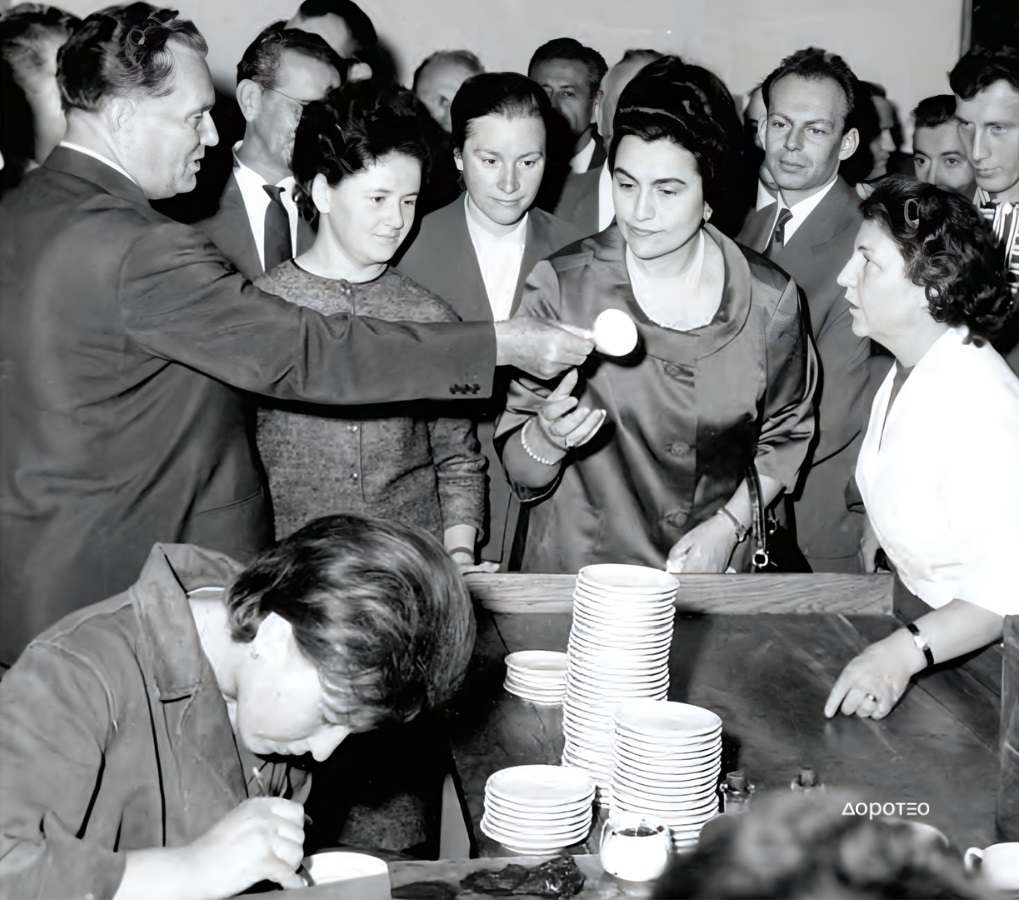
Jugokeramika, covering a wide range – from porcelain tableware to sanitary products, simultaneously stands as one of the most significant examples of the development of industrial design in SFRY. Namely, this Yugoslav giant in ceramic production stood out with pioneering efforts in implementing design in Yugoslav industry, under very demanding conditions of mass production.
Alongside Kranjska Iskra and the Rade Končar factory in Zagreb, Jugokeramika was among the first to employ designers, emphasizing the importance of design in manufacturing.
Bringing Modernism to Yugoslav Mass Culture
The first chamber kiln in Jugokeramika was lit on September 2, 1953, marking the start of the painstaking process of setting up the production. Initially, the factory faced numerous challenges in production, including unskilled workers, a lack of raw materials, and technical difficulties. At that time, it was common for the factory to produce only about fifty usable plates per day, while most items resembled the first oval plate that came out of the factory kiln, now preserved in the Museum of Arts and Crafts in Zagreb. Due to bubbles on the surface, such plates were called “mlinci.”
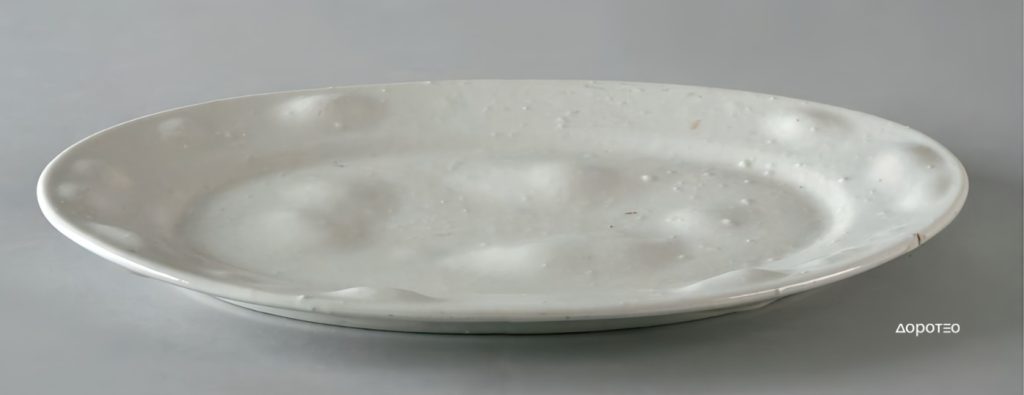
However, the factory quickly improved the production process and reached the planned initial capacity of 5500 tons of tableware annually. In the 1950s, Jugokeramika became part of the accelerated process of industrialization and mass urbanization of the new urban population. Design gained particular importance in shaping the state’s image, but its abstract form and modern expression were accepted only by a small number of the cultural elite, while for the majority of the population, the dinnerware was still just that – dinnerware.
Nevertheless, Jugokeramika actively worked on establishing a design sector from the very beginning. Initially, they engaged Blanka Dužanec and Stella Skopal, professors from the School of Applied Arts, who worked on more advanced forms, testing the limits of the production process. Blanka Dužanec introduced new subjects such as Modeling and Constructive Drawing of utility items for mass production at the school, understanding the importance of industrial design and trying to instill a love for this new field in her students. At her recommendation, Jugokeramika awarded scholarships to two students, Anica Kuhta-Severin and Dragica Perhač, who later became key designers in the factory.
Pioneers of Industrial Design in Yugoslavia
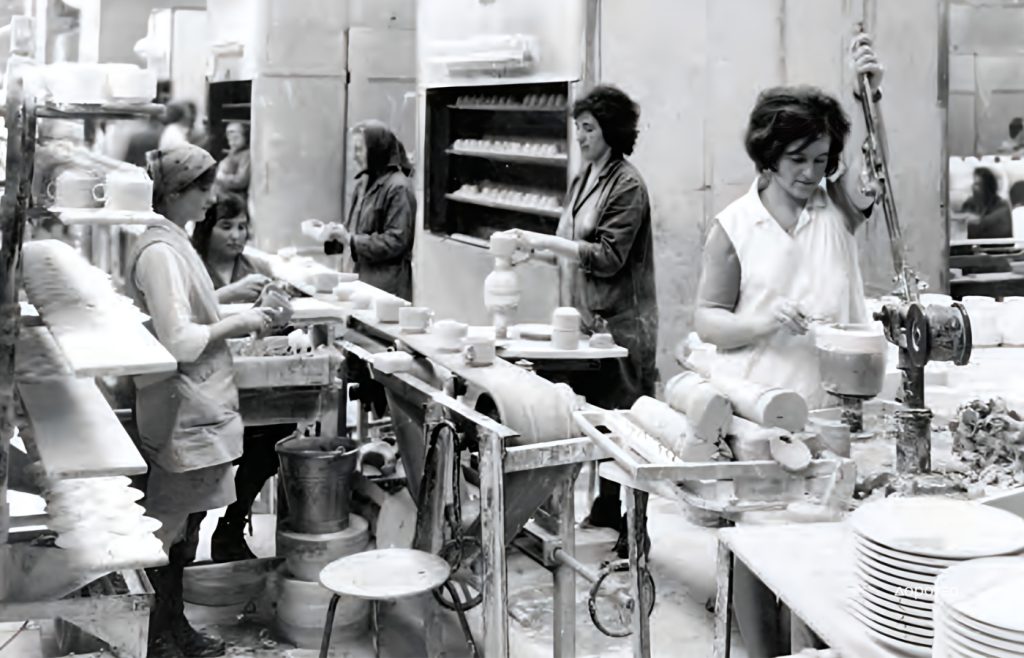
Jugokeramika also stands out for its specific gender employment policy, where women played a key role in the workshops, especially in the Prototype Sector. In 1954, Jelena Antolčić, the third of four designers who marked Jugokeramika’s production, was employed in this sector, and in 1957, Marta Šribar joined.
This factory had a unique dynamic where women dominated in design, although men were sector managers until the late 1960s. Alongside the four mentioned designers, many other female and male designers passed through the Prototype Sector until its closure in 2009, both through internships and permanent engagements.
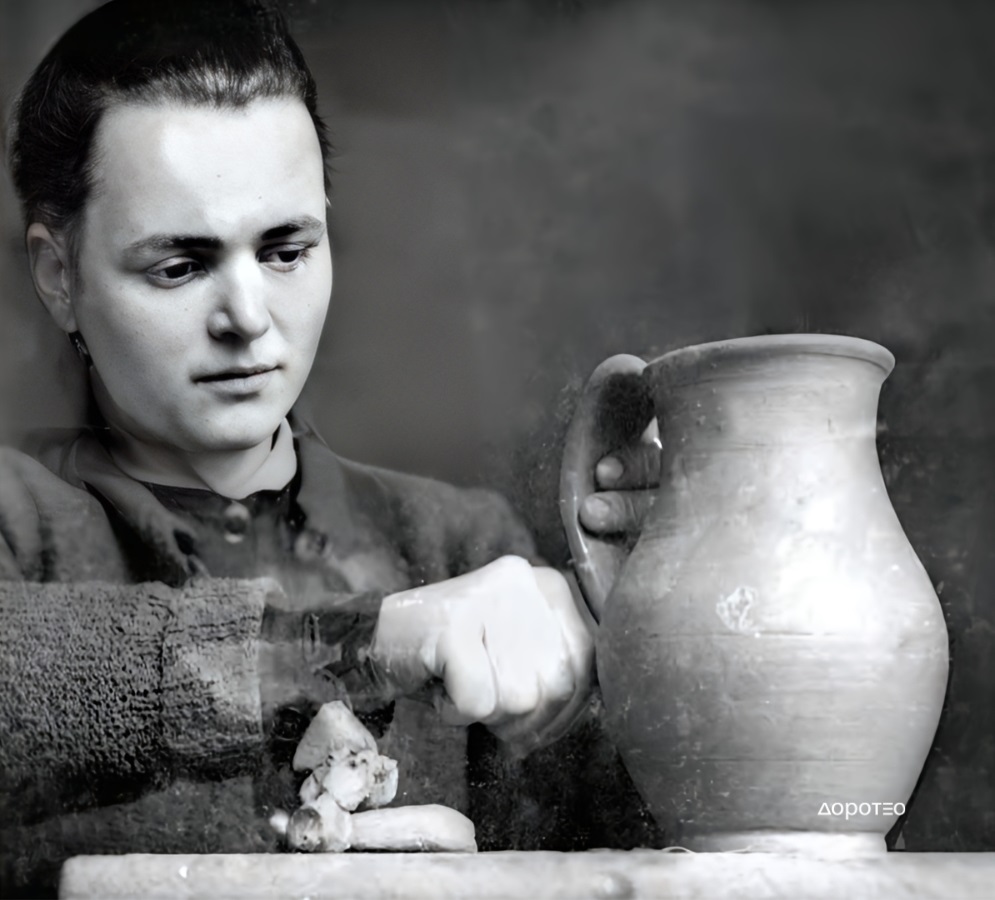
The Golden Sixties
Marta Šribar, as a member of the SIO group (Studio for Industrial Design), achieved Jugokeramika’s greatest international success at the XI Milan Triennale, where her Triennale set won a silver medal. Unfortunately, this set – like most products exhibited in Milan – never entered mass production. Only large plates from this set were produced in larger quantities and sold as individual pieces.
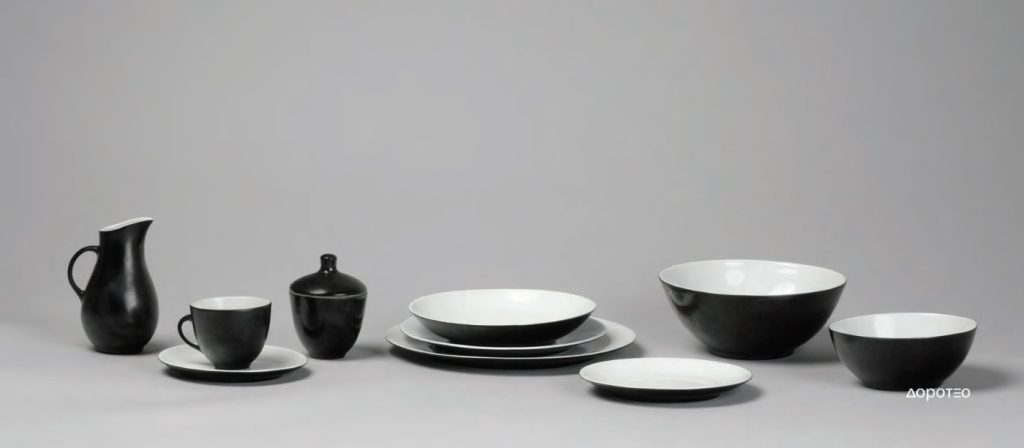
Brazil, the first Yugoslav thin porcelain set designed by Dragica Perhač in 1962, stands out as one of the most significant products. It is also a complete dinner and coffee set, belonging to a small group of well-designed domestic products that underwent mass industrial production, earning it the epithet of a classic Yugoslav design. One piece was ordered for Tito’s residence in Karađorđevo.
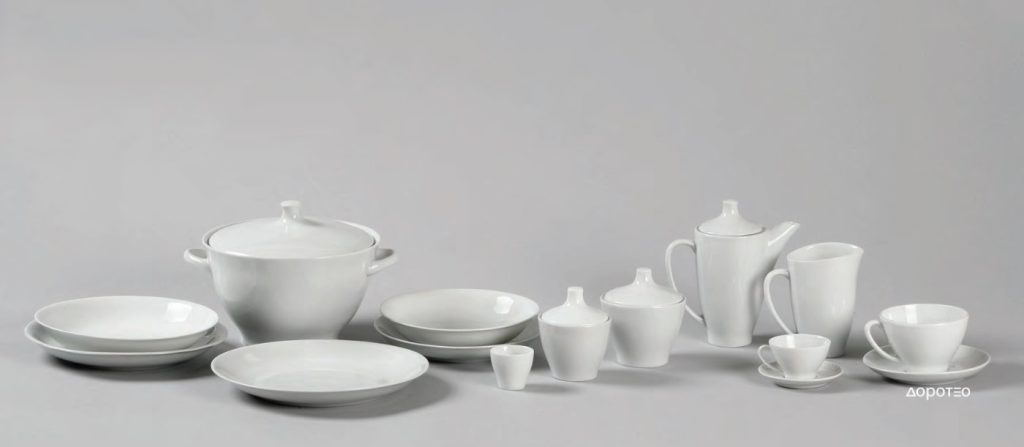
The sixties represent the golden age of Jugokeramika. This period is characterized by a rich production of sets, which became synonymous with the Yugoslav tourist industry, such as the dinner and coffee set “Arena,” designed by Marta Šribar and Anica Kuhta – Severin. During this time, the designers began experimenting with transfers, shaping abstract, mostly geometric, decors on vases and sets.
Jugokeramika products were consistently showcased at international ceramic exhibitions during the sixties and seventies, standing on an equal footing with products from Rosenthal, Arabia, Arzberg, Gustavsberg, and other major European porcelain factories. While they may not have been overly revolutionary in terms of design, what is noticeable is the high level of their technical execution.
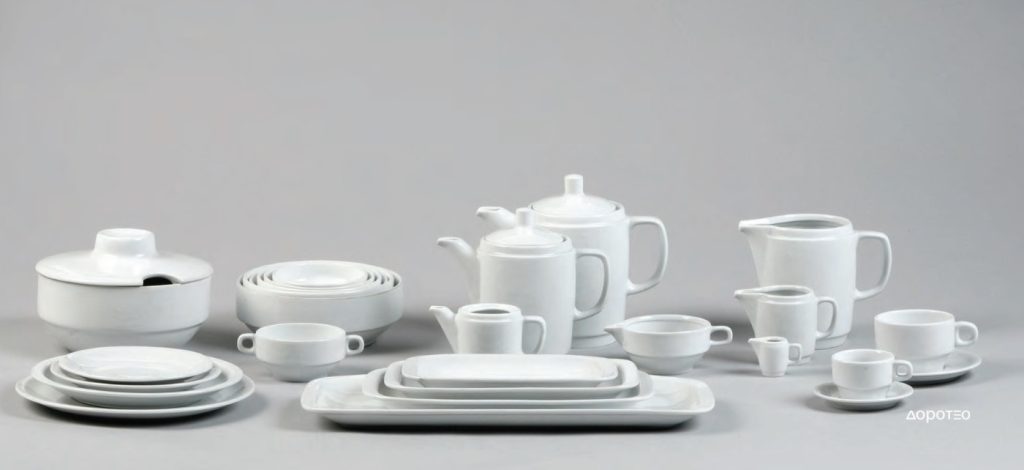
Hospitality Porcelain
In the 1970s, Jugokeramika changed its strategy by focusing on the production of hospitality porcelain, responding to the growing demand in tourism. Arena and Grič, two commercially most successful (and longest-lasting) Jugokeramika hospitality sets, became synonymous with Yugoslav tourism, constituting up to 90% of Jugokeramika’s total production at that time.
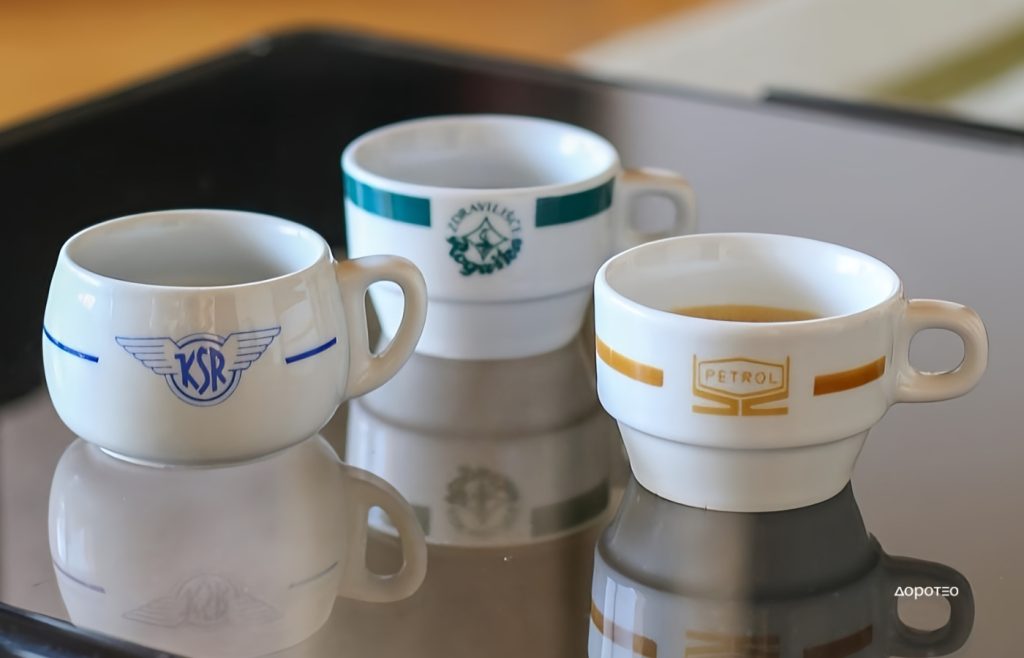
With their recognizable design and additional branding, they could be found in almost every hotel, resort, and tavern from the Vardar River to Triglav. Therefore, even today, when Jugokeramika is mentioned in informal conversations, these pieces are generally the first association.
Legacy
In the late 1970s and during the 1980s, production in the Prototype Sector significantly slowed down, and financial and energy crises affected further development. Also, Marta Šribar lost her life in a traffic accident, and Dragica Perhač and Anica Kuhta-Severin retired. The nineties brought new challenges, including war and changes in ownership structure. Jugokeramika underwent restructuring and changed its name to Inker in 1991, was sold to foreign owners in 1996, and closed down entirely in 2009.
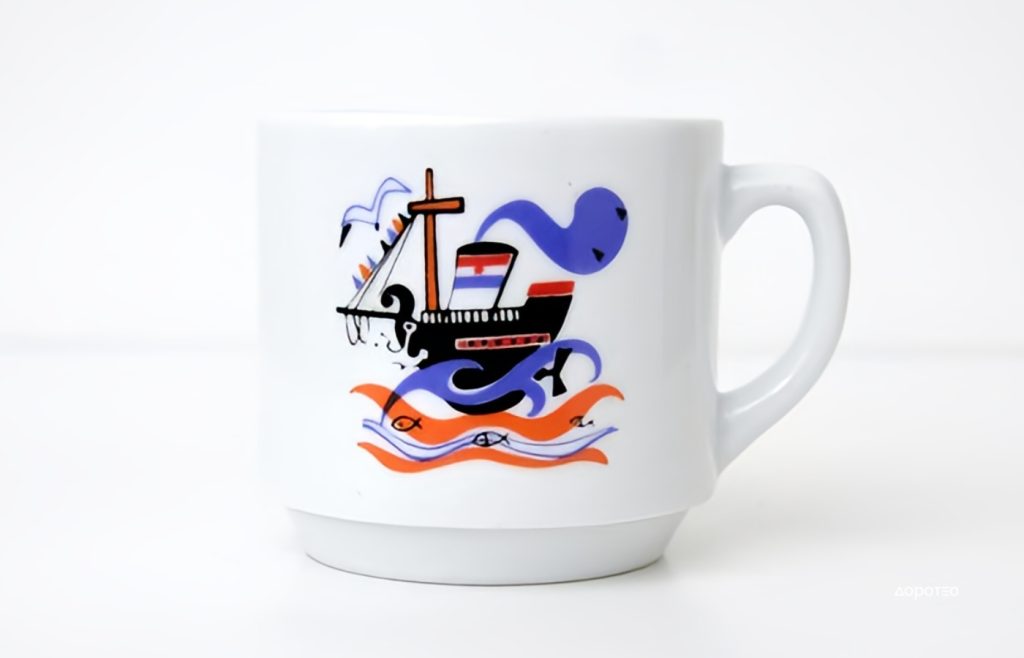
Jugokeramika’s products were not just a product of the industrial revolution and a response to the demands of consumer society but also a mirror of the times in which they were created. Through Yugoslav ceramics produced in this factory, as well as those from Titov Veles, Zaječar, Kamnik, or Liboje, we can trace social development, changes in ideologies, and the merging of local traditions with global influences. Designers at Jugokeramika not only shaped products but also infused the spirit of an era into each piece, leaving us with a legacy that is still studied, appreciated, and preserved today.
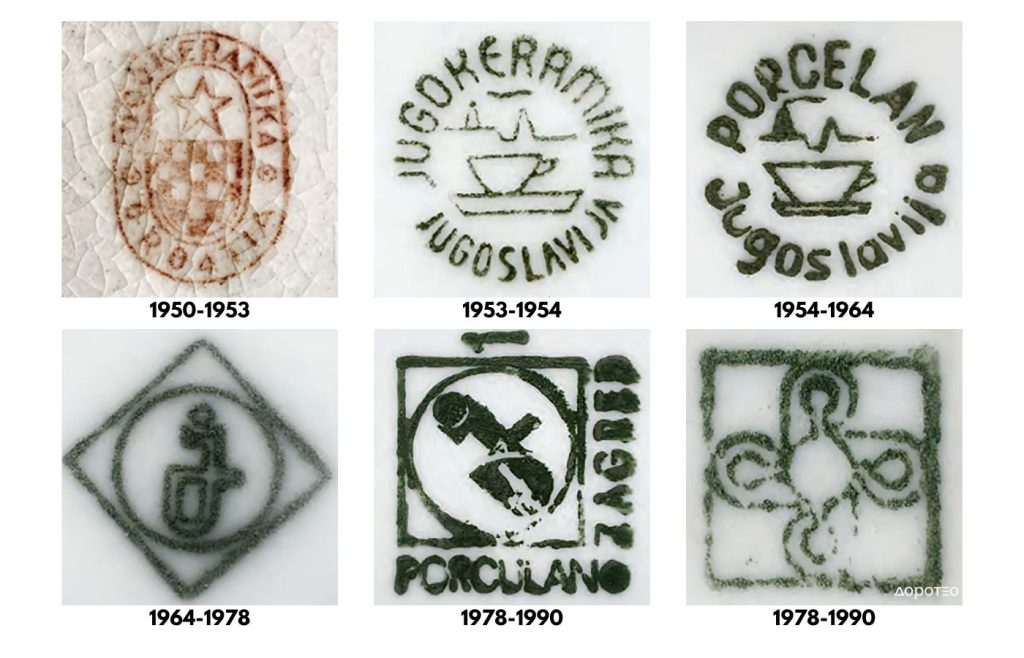
All images and materials are copyright protected and are the property of doroteo.rs


